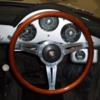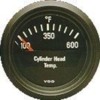Seems to be some contention over the accuracy of cylinder head temperature gauges. This centers around the wiring itself emanating from a very hot place going to and through a much cooler place. Results, at 350 degrees about 30 to 40 degrees inaccuracy. Any comments from you wrenches? Thanks in advance. Also, best brand to purchase.
Original Post



